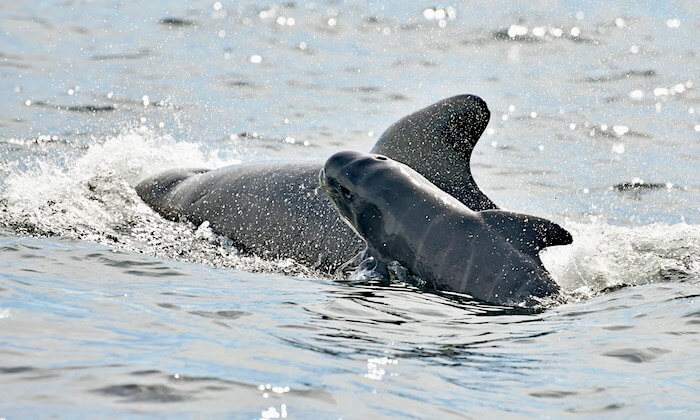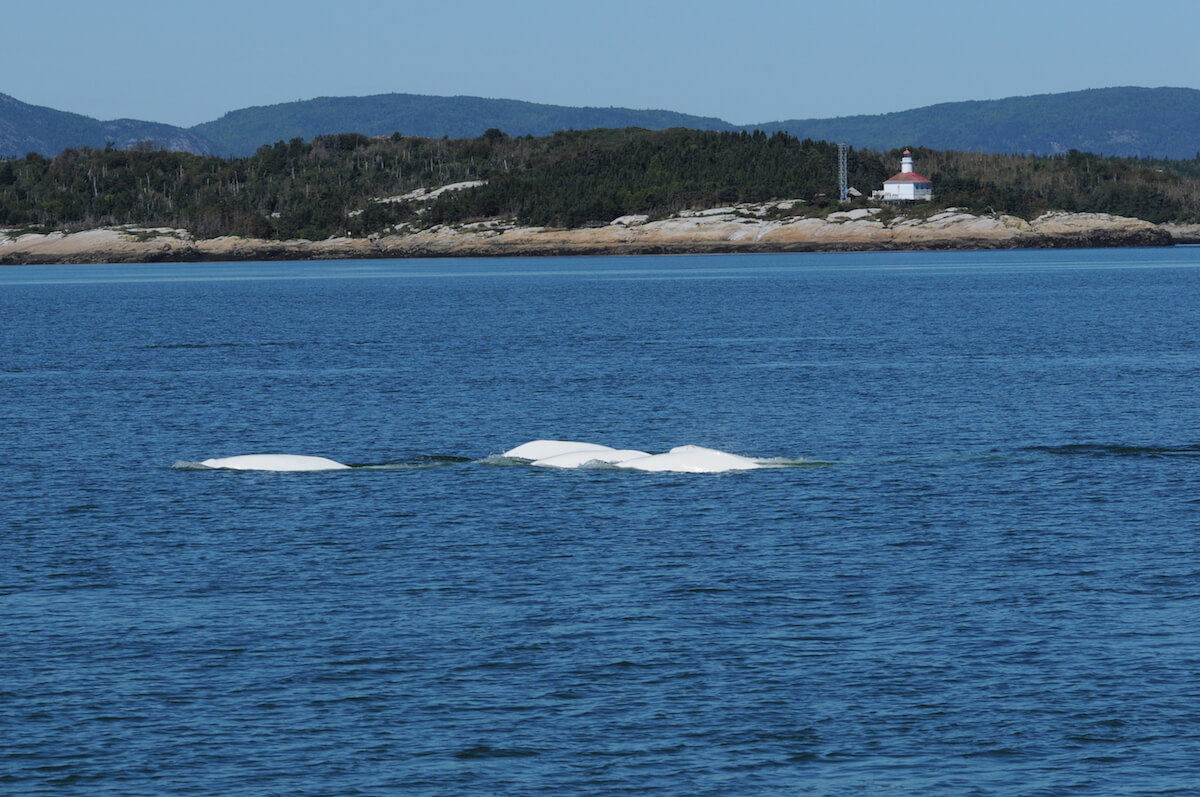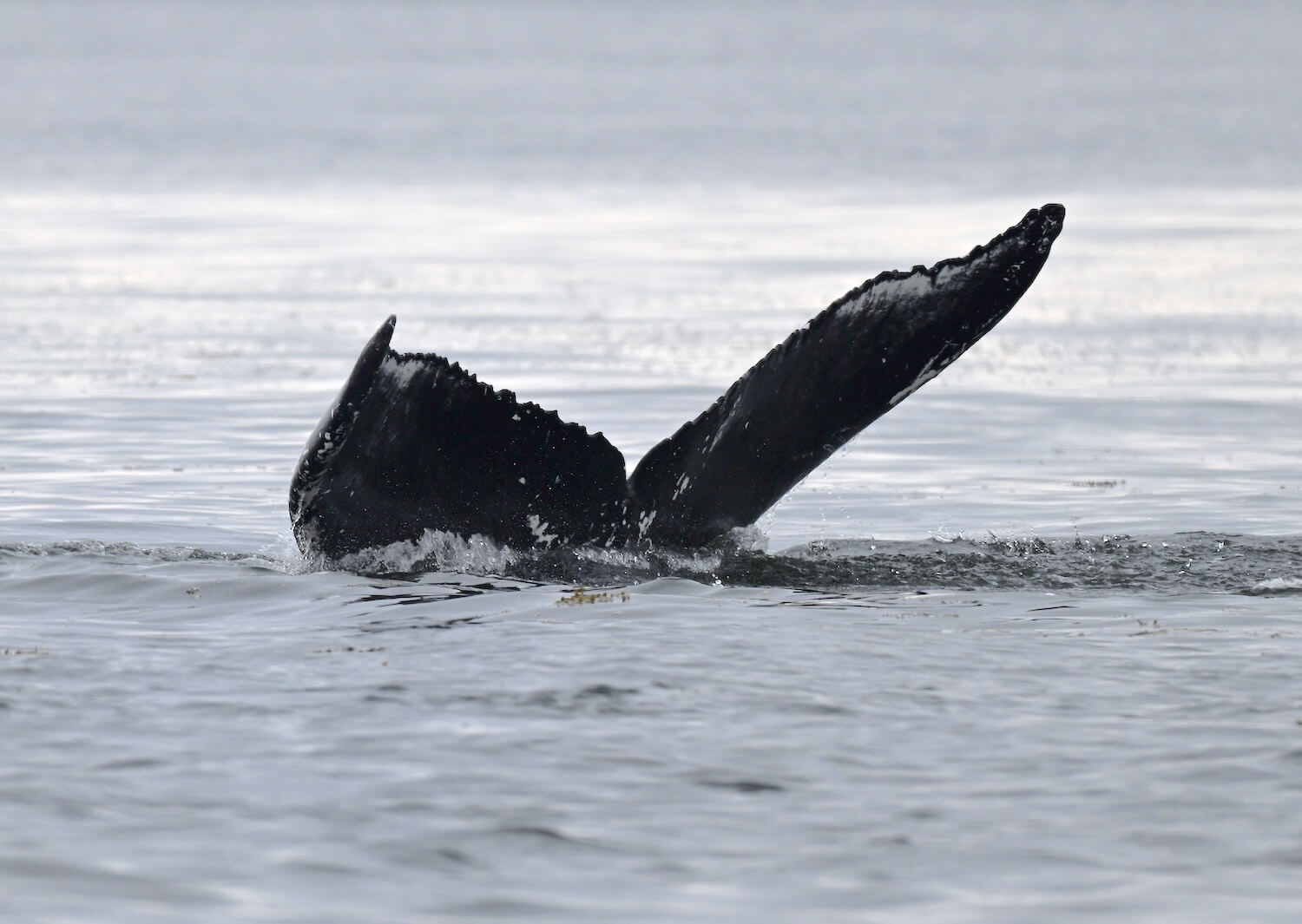Dark skin, long pectoral fins, a round head resembling that of a beluga, and a short beak: the pilot whale does not really have the typical appearance of the more familiar dolphins. And yet, it is a dolphin! Together with the killer whale, it is even one of the largest members of the dolphin family. In the Northwest Atlantic, pilot whales gather offshore in winter and spring and move closer to the coasts in summer and fall. In the St. Lawrence, they are observed in particular near the Gaspé Peninsula.
Nearly fifteen pilot whales are seen off L’Anse-à-Valleau in the Gaspé Peninsula on May 13. Two members of the Mingan Islands Cetacean Study (MICS) team and their captain and collaborator, René Roy, are delighted to witness this unexpected encounter. The MICS team posted a video on its Facebook page and René Roy details the 111 nautical miles travelled in his Field Notes. However, the trip doesn’t end there! All in all, they sail 300 nautical miles over the weekend. Observations continue one after the next: two blue whales, about fifteen fin whales, three humpbacks, several minke whales, porpoises, gray seals and harp seals!
While pilot whales are unusual-looking dolphins, porpoises, which resemble dolphins (Delphinidae) in appearance and behaviour, belong to a distinct family: Phocoenidae. Beyond phylogenetic considerations, there are physical peculiarities that distinguish them: porpoises have a rounded muzzle and a triangular dorsal fin, while dolphins have an elongated rostrum – though not all of them if one thinks of pilot whales! – a sickle-shaped dorsal fin and are larger in size. Their teeth are also different: those of dolphins are sharp while in porpoises they are spatula-shaped.
At Cap-Chat, a kayaker observes at least twenty harbour porpoises on May 13. He is hardly alone on the water that day! In fact, two inquisitive gray seals are close to his boat, dozens of pairs of loons are present and gannets are circling above the water surface… and his kayak!
[metaslider id=24547]
At the mouth of the Saguenay, a few groups of belugas are observed and harbour seals are basking on the rocks at the foot of the mountains. Twenty-one species of warblers are tallied on May 18 from Les Bergeronnes and Tadoussac. The lack of wind and the heavy rain in recent days had prevented them from continuing their northward migration. On May 18 and 19, weather conditions improved and they resumed their journey in large numbers.





